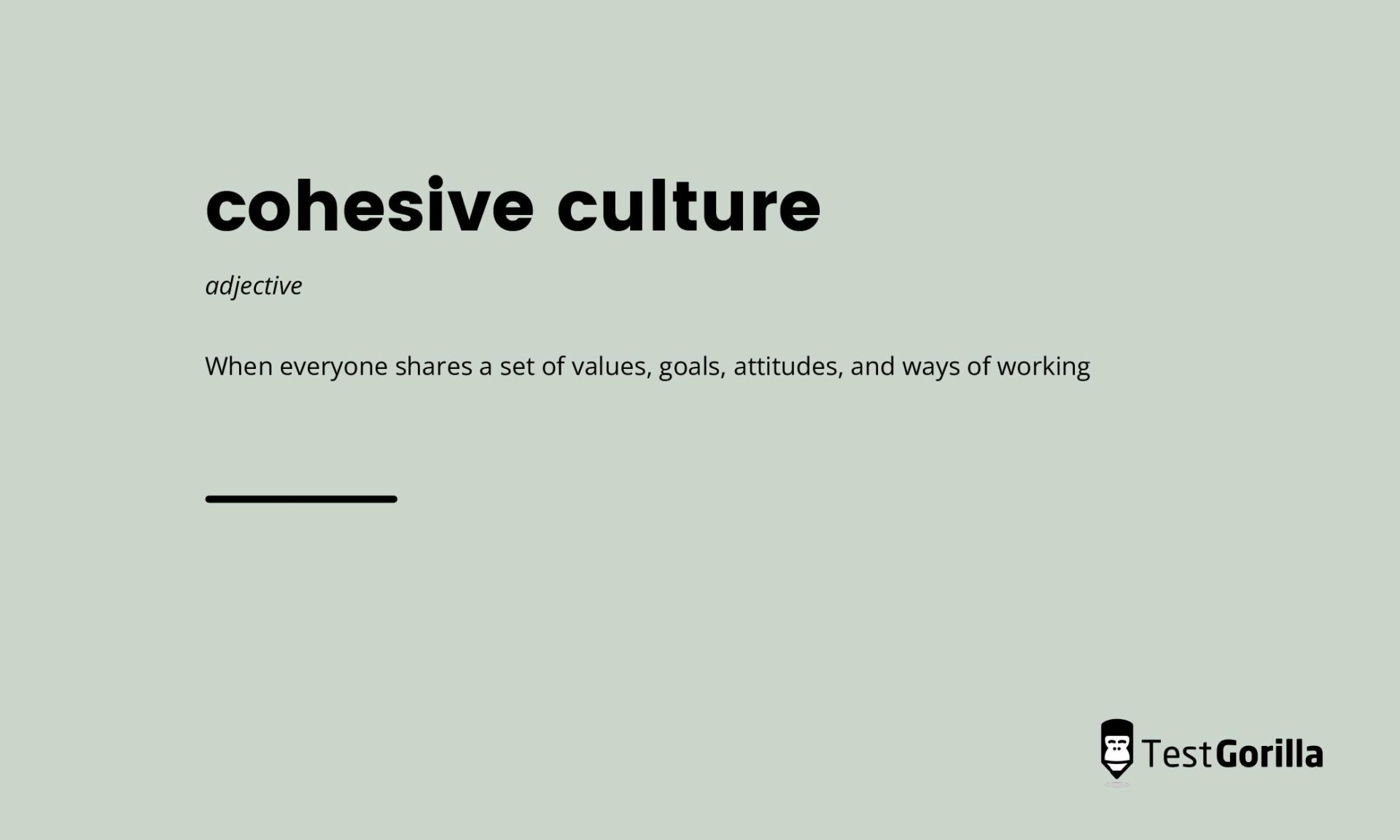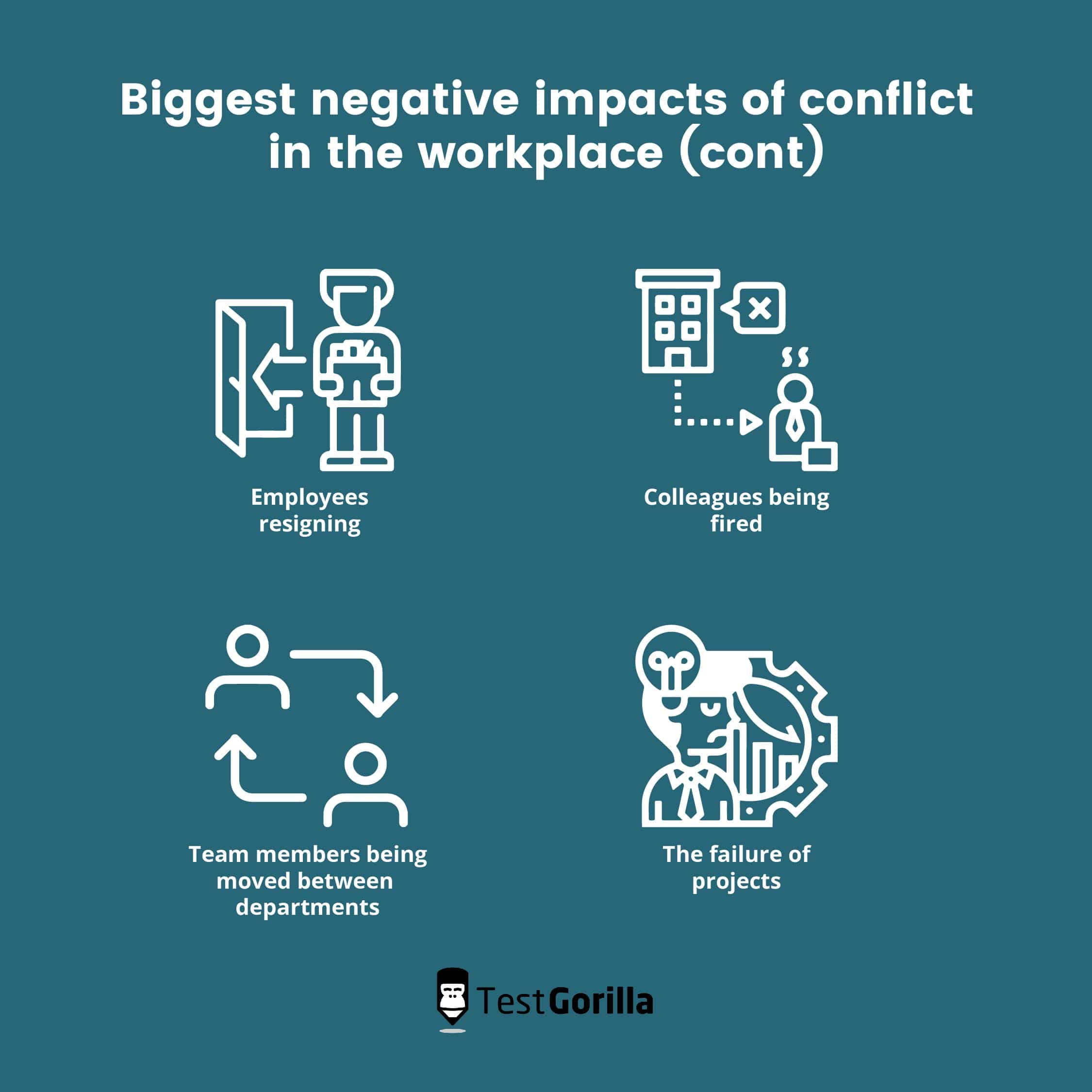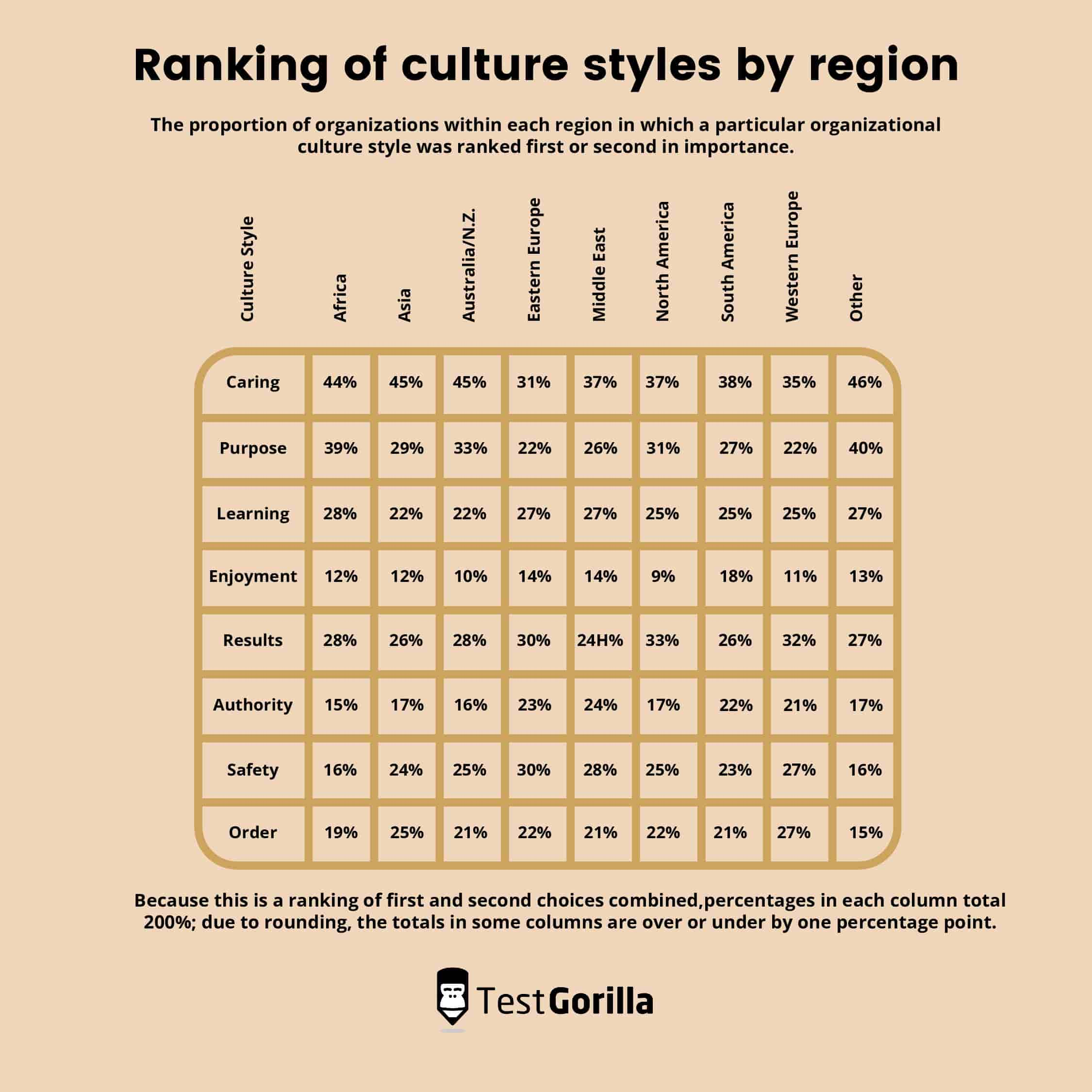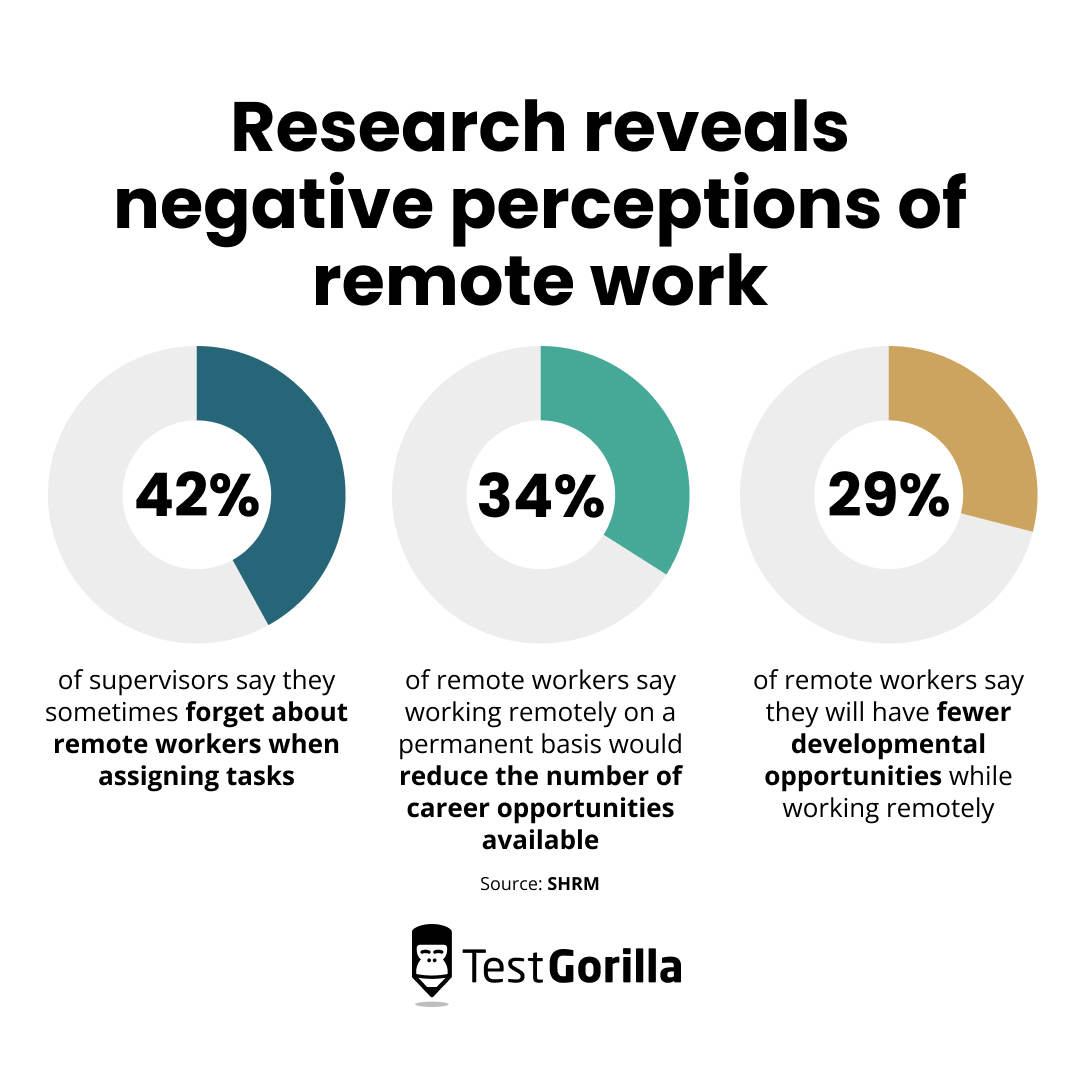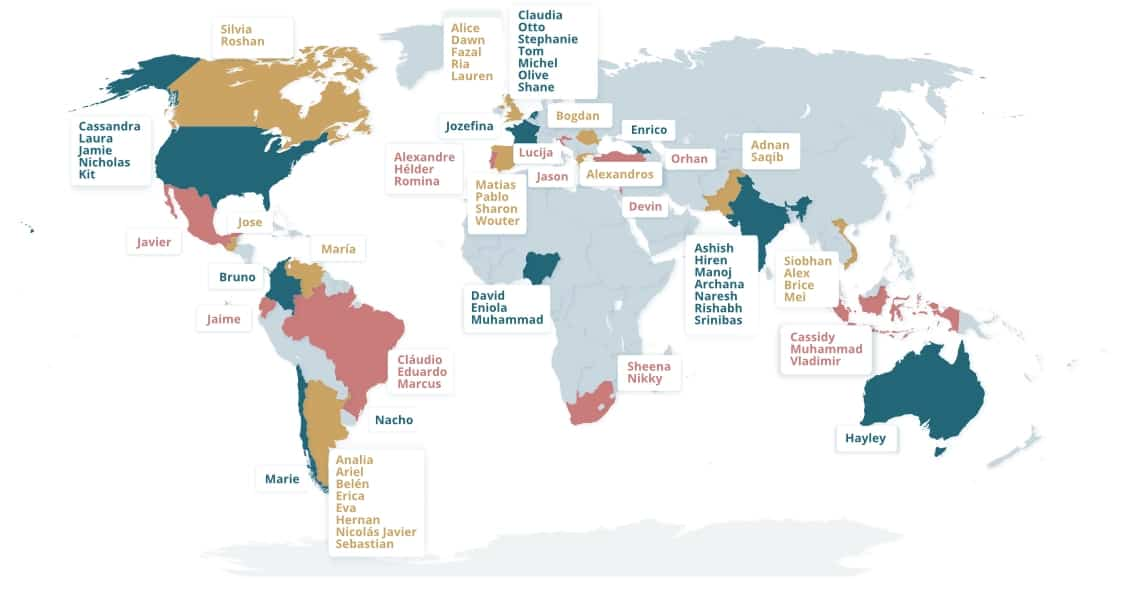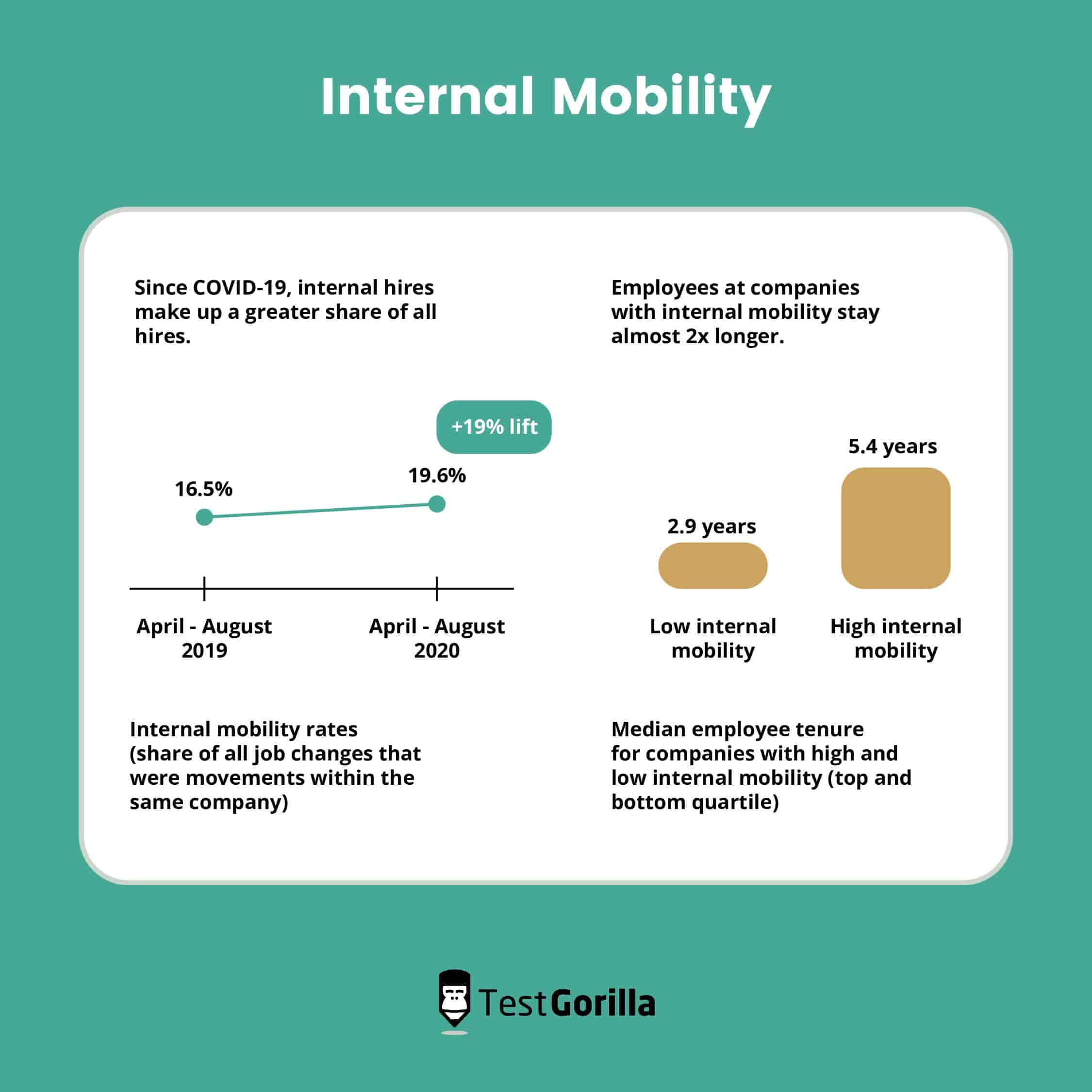Let us guess:
Before the pandemic, when people asked about your company culture, you had your answer ready. You likely reeled off phrases like “collaborative” and “motivated” and let the buzz in your office do the rest of the talking.
…Then the pandemic hit.
Now, like many businesses, you’ve only returned to the office part-time, or perhaps you’ve even pivoted to a fully remote model.
Assessing and improving your company culture has gotten a lot harder. After all, how do you measure the atmosphere of a Zoom call?
Although we can’t offer you a Zoom meeting thermometer, we can assure you that creating a cohesive culture in remote and hybrid work environments is possible.
And we’ll do you one better – this post will show you what a cohesive culture looks like and equip you with 10 actionable tips for implementing one.
Table of contents
- What is a cohesive culture?
- Why does a cohesive culture matter to businesses?
- Why is creating and maintaining a cohesive culture difficult in remote/hybrid companies?
- 9 tips for building and maintaining a cohesive remote or hybrid workplace culture
- Begin building your cohesive culture with the right hiring tools
What is a cohesive culture?
An organization has a cohesive culture when everyone shares a set of values, goals, attitudes, and ways of working.
It’s consistent across teams and departments regardless of location or leadership, and it dictates not only the kind of organizational structure you have (for example, your executive team’s leadership style) but also:
How employees interact with each other
How decisions are made
What motivates your employees to succeed
Creating a cohesive culture is about managing how it feels to work for your organization, and it helps you attract the best candidates to your open positions.
This is why so many organizations describe their cultures in similar ways.
An MIT study of Glassdoor reviews compiled the “Big Nine” traits that candidates were looking for in a company culture, which included:
Agility
Collaboration
Diversity
Respect
Sound familiar?
You’ll see terms like this in company culture descriptions a lot, but your organization’s cultural identity depends on its unique values, practices, and attitudes. You can find out more about this in our blog post on how to assess your organizational culture.
An example of a business that has successfully implemented a cohesive culture in a hybrid work environment is ProofHub.
To drive up employee engagement in the sudden switch to remote working during the pandemic, the company started asking every employee three questions:
How can we make work more fun for you?
If you were in our shoes, how would you deal with it?
How can we set you up for greater success?
Though each employee might have answered these questions differently, promoting a sense of fun and using it to drive engagement in the company’s overall mission helped to create a cohesive understanding of what the organization is about, and it earned ProofHub a spot on Forbes’s 2021 list of the best employers.
When does cohesive culture fail?
Cohesive culture fails when its focus on people outweighs its focus on the work – or vice versa. This can have disastrous consequences for your organization’s reputation.
An example is the fintech company Revolut, which became caught up in a storm of bad press when employees alleged that its culture of ambitious target-setting came at the cost of employees’ well-being.
But getting good press for your business isn’t the only reason to prioritize a cohesive culture.
Why does a cohesive culture matter to businesses?
We know that company culture is a top consideration for job seekers when they are deciding whether to take on a role: 86% of candidates say it is somewhat or very important.
It’s even more important once they’re working for you.
Creating a cohesive culture is about getting everyone – from executive leadership to junior employees – on the same page, working toward the same shared vision and mission.
A cohesive culture provides a behavioral framework for your staff, giving them guidance on how to:
Lead new initiatives
Respond under pressure
Celebrate success
Provide feedback
It can even help them make tough decisions and respond to conflict.
Let’s say a conflict arises between a sales team member responsible for producing a monthly report and an accounting team member who is consistently late in giving them the data they need.
Here are the possible solutions to this conflict based on the company’s key culture traits:
Key culture trait | Solution |
Innovative | Investigate software products the company can use to centralize sales and accountancy reporting |
Collaborative | Reshuffle team schedules to make the deadlines easier to meet, and create a shared document to streamline data exchange |
Development-focused | Schedule training for the sales team on how to get the data they need from the accounting software |
Eliminating these kinds of speed bumps naturally improves employee retention by reducing the wide-ranging negative impacts of workplace conflict.
This leads to a better employee experience, lower turnover, and stronger financial performance.
Why is creating and maintaining a cohesive culture difficult in remote/hybrid companies?
Remote and hybrid working skyrocketed during the Covid-19 pandemic, and it looks like it’s here to stay. Research shows that 72% of all knowledge workers prefer hybrid working, and fewer than one in five executives say they want to return to the office as it was before the pandemic.
However, because most organizations adopted remote work as an emergency measure (rather than a considered business decision), many are now dealing with the challenges involved in incorporating remote and hybrid working into a long-term cohesive culture.
Here are five key challenges that hybrid working poses to cohesive culture formation.
1. There’s no strong sense of belonging among employees
How can you help people feel at home in your business when they’re working from their actual homes?
In a traditional workplace, a sense of belonging comes from the almost intangible moments you share with your coworkers hundreds of times a day. These might be:
A joke with your team
Someone making you a cup of coffee
A manager stopping you in the corridor to say they liked your presentation in the last company meeting
These impromptu, non-transactional moments are hard to recreate in a hybrid work environment and impact workers’ connection to their jobs.
2. New employees aren’t being immersed in the culture
If your long-time team members don’t feel a sense of belonging, your new hires definitely won’t. Traditional onboarding methods rely on:
Lots of meetings
In-person training
Team lunches
Being towed around the office and nodding politely while listening to names you’ll forget 10 seconds later
Though all but the last one (thankfully) can be moved to online communication tools, the intangible benefits are lost in translation, and employees risk starting off on the wrong foot.
3. Silos are emerging between teams and departments
With most employees mainly interacting with their own teams online, it’s easy for silos to form. This is bad for information exchange and interdepartmental collaboration and can even encourage conflict.
Leaving groups to their own devices could create conflicting subcultures, particularly if you work in a company with many international teams because different geographical regions have different expectations of working culture.
4. There are ample opportunities for remote worker discrimination
The partial return to the office can also open up a rift between mostly or fully remote workers and those who prefer working in the office full-time.
Remote workers might find themselves:
Left out of important meetings
Not invited to actively participate in the hybrid meetings they do attend
Missing out on impromptu discussions in the office
Passed over for promotion by leaders
This isn’t just paranoia: An SHRM study found that 42% of supervisors say they sometimes forget about remote workers when assigning tasks, and 34% of these workers say working remotely permanently would reduce the career opportunities available to them.
This is likely to disproportionately affect those who need to work from home for reasons other than pure preference, for example, working parents and those with disabilities.
5. For employees, out of sight = out of mind
If employees don’t have:
A sense of belonging that reaffirms your organization’s mission and values
A strong connection to leadership and colleagues across the business
Equal opportunities to develop and progress
…what do their jobs become?
The answer? Just something to pass the time – or even a nuisance to procrastinate on while working from home. Without a cohesive company culture keeping employees engaged, productivity can plummet, and your turnover can rise.
Here’s a quick summary of the challenges to creating a cohesive culture:
Remote and hybrid culture challenge | Tips to tackle it |
There’s no strong sense of belonging among employees | Hire for culture add, not just culture fit; Implement a rewards system for embodying company values |
New employees aren’t being immersed in the culture | Institute a regular company retreat and face-to-face social events; Create a systematic approach to the employee experience, e.g., assigning new hires a buddy for their first few weeks of work |
Silos are emerging between teams and departments | Facilitate communication across teams using the right tools; Establish a cross-departmental culture committee to spot and solve problems |
There are ample opportunities for remote discrimination | Use senior leadership figures to role model correct communication in hybrid teams; Train all team leaders to properly chair hybrid meetingsInstitute a specific hiring policy for internal hiring |
For employees, out of sight = out of mind | Empower teams to set their own number of virtual meetings for work and social exchange; Create opportunities for teams to socialize regularly outside of work, e.g., through sports teams and leagues |
9 tips for building and maintaining a cohesive remote or hybrid workplace culture
We know it all sounds like doom and gloom so far. Maybe you even recognize some of the challenges we’ve laid out above from your own experiences.
But before you pull out your violin and vow to go down with the ship, let us tell you that you can turn the boat around by following remote work best practices.
Here are nine tips to get you started.
1. Role model company culture in your senior leadership team
The best place to start when creating a cohesive culture is at the top of your business. In fact, the Harvard Business Review recommends you start with the board of directors.
Outline your purpose and vision, and then share these with your whole organization, making sure to build a development structure that helps your people map these overarching goals back to their individual roles.
It’s especially important for senior employees and managers to embody your culture and lead by example.
For instance, if you’re the chief executive officer of a startup whose core values include the maxim that a good idea can come from anywhere, you might:
Hold frequent town hall meetings to source innovative ideas
Schedule one-on-one meetings with new hires once they’ve settled in to ask for their perspective
Have monthly catch-ups with each team to hear their ideas for improvement
An example of this type of leadership in action comes from Benjamin Crudo, the chief executive officer of Diff Agency. Diff’s stated values as an employer are:
Respect
Collaboration
Creativity
Accountability
Excellence
During the shift to remote work as a result of the pandemic, Benjamin felt like he was becoming isolated from his teams, so he decided to have one-on-one remote lunches with everyone in the company.
He found that setting up these kinds of non-transactional meetings with colleagues built trust, improved his insight into his organization, and enabled him to uncover the hidden talents he didn’t know his employees possessed.
2. Create a systematic approach to the employee experience
You need a clear policy in place to engage your employees right from the beginning of their time with your company all the way through their employee life cycle. This includes:
The hiring process
Preboarding and remote onboarding
Regular employment reviews
Development and promotions
Their notice period and exit interviews
Make sure they feel respected and understood at every point of the journey. Let’s take the example of remote onboarding. Here’s how we do it at TestGorilla.
We have remote team members working all over the world.
Each time we make a new hire, employees start off by watching videos made by senior members of our team introducing the business and explaining how it works. Our aim is to help them get to know our key leadership figures. We also:
Arrange get-to-know-you calls with relevant colleagues
Invite new joiners to online socials
Ask them to create introduction videos so that their colleagues can also get to know them
You can read our full guide to virtual onboarding to learn more.
3. Hire for culture add, not culture fit
In addition to assessing candidates’ aptitude for remote working during the hiring process, you should also have one eye on culture add.
No, that’s not a typo – we really mean culture add, not just culture fit.
Traditionally, leaders were encouraged to hire team members who would “fit in” with the existing team, which often came down to “Would I have a beer with them?”
The subjective nature of this type of evaluation became a breeding ground for poor decision-making rooted in biases based on first impressions (they support the same sports team as you or have the same sense of humor) and unconscious prejudices.
Not only is this bad for diverse hiring, but it can also lead to groupthink.
Instead, you should look for a candidate who can add to your organization’s culture while still sharing its core values. Culture add is easy to screen for during hiring and goes a long way toward creating a cohesive culture.
4. Reward employees for supporting the company’s values
If you want to keep your core values and mission at the forefront of your employees’ minds, consider rewarding teams and individuals for supporting your cohesive culture.
There are loads of different ways to do this, for example:
Holding monthly, quarterly, bi-annual, or annual awards ceremonies where you recognize teams for upholding your values or contributing to your mission
Giving employees the power to vote for their colleagues to receive rewards, for example, with a points system
Incorporating values-based metrics into teams’ performance reviews – for instance, in a recruiting team, giving rewards to members whose feedback reflects your core values
At TestGorilla, we’ve implemented this by holding an awards ceremony offsite and choosing one winner for representing each of our company values.
5. Facilitate communication with the right tech tools
As we all quickly learned when navigating remote working for the first time, tech can either be a lifesaver or suffocate your productivity.
Using the right tech tools for your needs is a good way to start. We’ve broken down the best remote work tools for you in another article, but here’s a bite-sized introduction:
Function | Tools | Example guidelines |
Messaging | Slack; Troop; Messenger; Soapbox | For discussing day-to-day priorities and updates and collaborating on work. Not for tracking project progress or storing files. |
Project management | Asana; Trello; Basecamp | For managing project updates, storing relevant project files, and notifying team members of priorities and tasks. Not for small notes or in-depth collaboration. |
File sharing | Google Drive; Dropbox; WeTransfer | For sharing and storing working files, not client-sensitive data. |
Productivity | Todoist; Be Focused; Toggl | For tracking billable hours and generating reports. Not for tracking time spent on internal tasks. |
Once you’ve chosen your tools, you must establish clear communication and collaboration guidelines for how and when to use them.
This can be practical advice. For instance, you could ask your design team to use Slack for day-to-day communication but store all project updates in Trello.
It can also be focused on well-being. We always remind employees to make tech tools work for them, not the other way around. Tools like Slack are great, but if you’re in 47 channels that have nothing to do with your job or your life, you should feel able to leave them without worrying that it gives a bad impression to your teammates.
6. Be smart about virtual meetings
If you’ve done even a cursory Google search on this topic, you’ve probably seen a lot of conflicting advice. Some sources say remote teams should get rid of regular meetings altogether, whereas others say that in the world of hybrid and remote working, regular meetings should be an even higher priority.
To this, we say that it depends on the working style of your teams.
In a Scrum development team, for example, daily stand-up meetings are a key part of project management and are usually needed to set the agenda. This is because development work is likely to change unexpectedly, and developers may need to be subbed into other projects, particularly in teams working on multiple projects.
On the other hand, for a B2B sales team working for a company in which conversions often take many months, daily updates might just be a headache. These could be reduced to weekly or monthly meetings, interspersed with purely social catch-up calls.
To account for this diversity of working styles, you should empower your teams to choose the meeting schedule that works best for them under the broad guidelines set out by your leadership.
This guidance should include communication guidelines for hybrid meetings that, again, are role modeled by senior leadership.
Sanofi’s chief executive officer Paul Hudson frequently chairs hybrid meetings, actively ensuring that:
Microphones and cameras are all set up and working correctly
He is listening to everyone in the room
Remote workers are being invited to participate
7. Create opportunities for teams to meet face to face
Though it may never be realistic for some of your employees to immerse themselves in office life, whether due to other responsibilities or health concerns, many will be able to attend one-off in-person events to meet their teams face to face.
Depending on your working arrangements and how dispersed your team is, regular retreats can be a great way to get your whole organization together and create that much-needed cross-team connection.
Examples of hybrid companies that offer employee retreats include:
Unsplash
Skale
Tropic
Pexels
If a retreat isn’t realistic, or you want more ways to promote in-person interaction throughout the year, other ideas to give your employees face-to-face time include:
“Away days” for personal development training
Company socials and holiday parties
Company-sponsored sporting events or clubs
8. Establish a culture committee with your employees
Seeking employee feedback is essential to lowering turnover and improving your overall organizational health.
An effective way to do this is with a culture committee: a team of employees from across the business who solicit feedback from their colleagues and present it to senior stakeholders.
To form a successful culture committee, you need:
Employees from across functions and levels of the business
Regular channels of communication between the committee and leadership
Budget allocation to implement their suggestions
A committee helps you identify areas for innovation and spot potential areas of weakness before they get out of control.
9. Offer equal opportunities for promotion
It’s not enough to create a cohesive culture that prevents remote talent from giving up on advancement opportunities – you need to go the extra mile and build a clear focus on internal hiring into your HR practices.
Offering equal opportunities for progression helps you:
Hire the best person for the job regardless of their preferred working location
Positively affect employee retention at large
Begin building your cohesive culture with the right hiring tools
At the beginning of this post, you were probably a little fuzzy on how to create a cohesive culture. Now, you not only know the definition of what cohesive culture is and why it matters but also:
The key challenges to creating a positive culture in your business
The policies and practices that create a cohesive organizational culture
Why you should screen candidates for culture add and select individuals who don’t just fit into your culture but grow it as well
Once you’ve implemented these tips, you’ll have a stronger answer than ever when candidates ask you about your organizational culture.
Read more about how to create a positive workplace culture in our free PDF guide.
With TestGorilla, you’ll find the recruitment process to be simpler, faster, and much more effective. Sign up for a free plan today and start making better hiring decisions, faster and bias-free.
Related posts
Hire the best candidates with TestGorilla
Create pre-employment assessments in minutes to screen candidates, save time, and hire the best talent.
Latest posts
The best advice in pre-employment testing, in your inbox.
No spam. Unsubscribe at any time.

Hire the best. No bias. No stress.
Our screening tests identify the best candidates and make your hiring decisions faster, easier, and bias-free.
Free resources
This checklist covers key features you should look for when choosing a skills testing platform
This resource will help you develop an onboarding checklist for new hires.
How to assess your candidates' attention to detail.
Learn how to get human resources certified through HRCI or SHRM.
Learn how you can improve the level of talent at your company.
Learn how CapitalT reduced hiring bias with online skills assessments.
Learn how to make the resume process more efficient and more effective.
Improve your hiring strategy with these 7 critical recruitment metrics.
Learn how Sukhi decreased time spent reviewing resumes by 83%!
Hire more efficiently with these hacks that 99% of recruiters aren't using.
Make a business case for diversity and inclusion initiatives with this data.

